#21. Appenzeller Sennenhunde
The Appenzeller originated as an all-around farm dog breed, who stayed busy herding the livestock, guarding the farm, and pulling carts in its native Switzerland. Today’s Appenzellers have still got the energy, smarts, and self-confidence that makes for valuable working dogs, but they’re anything but low-maintenance. Dogs of this breed need lots of exercise, training, and a job to do.
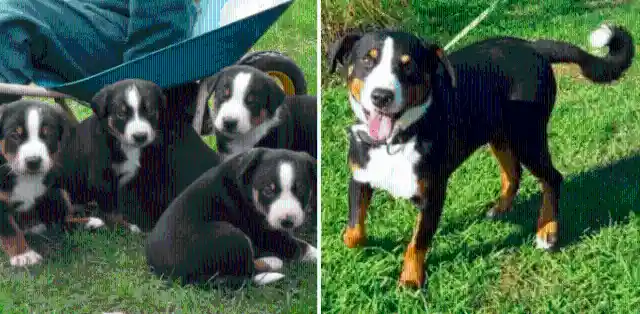
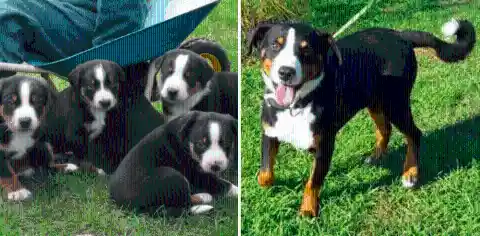
Initiated by Professor Dr. Albert Heim, a committed fancier of Swiss Cattle Dogs, the Appenzeller Sennenhund Club was established in 1906 to promote and preserve the breed. Dr. Heim set up the first valid breed standard in 1914 and with that the compulsory registration of puppies in the Appenzeller Dog Stud Book. Today, the breed can be seen all over Switzerland and in other parts of Europe. Though considered rare, the numbers of Appenzellers are slowly increasing in North America as well.
#20. Azawakh
This ancient hunting hound is so lean and rangy that its bone structure and musculature can be plainly seen beneath its skin. The smooth S-shaped contours, deep chest, and aerodynamic head mark the Azawakh as a member of the sight-hound family, which are canine sprinters that rely on keen vision and blazing speed to fix and course their prey.


The original homeland of the Azawakh, are the endless arid regions of the southern Sahara and the Sahel zone. Geographically encompassing the border region of Mali and Niger lies the center of the Azawakh Valley. These dogs are passionate hunters and provide the family with meat. Their preferred prey is hare, antelope, and wild boar.
#19. Bergamasco Shepherd
The Bergamasco Sheepdog is an ancient breed that is at least 2000 years old. The Bergamasco’s ancestors spread out along the Alpine chain. The dog’s coat is rather long, thick and shabby. Strong, sound and brave, this dog is also very intelligent and has a good equilibrium. The Bergamasco is a medium-sized dog, well-proportioned and harmonious, having a rustic appearance.
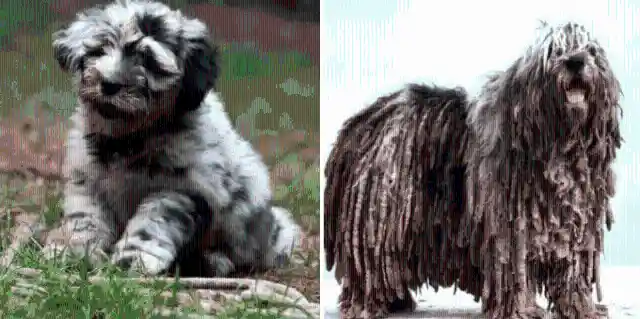
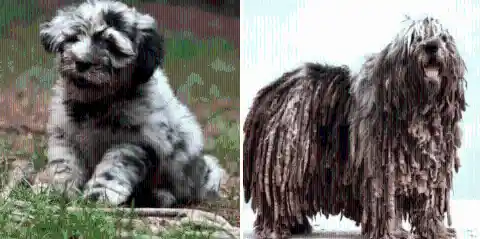
The Bergamasco is a peaceful dog. Attentive and reserved, it participates constantly in everything that goes on around it and, even when it appears to be asleep, its eyes will be following you, because it always wants to know where you are and what you are up to. Although not instinctively aggressive, the Bergamasco is an excellent watchdog because it doesn’t like strangers invading its world.
#18. Bracco Italiano
The Bracco Italiano has been called the oldest European pointer, and its history reaches back to the fourth or fifth century BC. While the exact ancestral origins are unknown, it is generally accepted that the Bracco Italiano was first a cross between the Segugio Italiano and the Asiatic Mastiff, which has since become extinct. The breed was developed in northern Italy, and its most famous variety is the white-and-orange-colored.
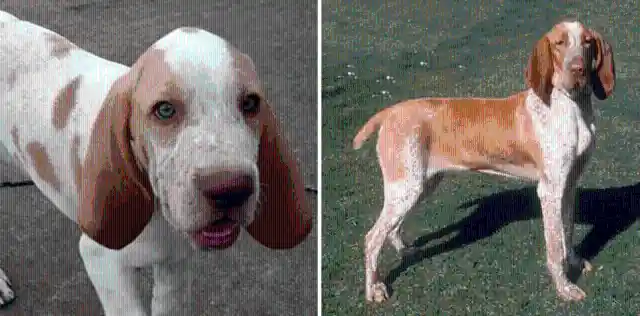
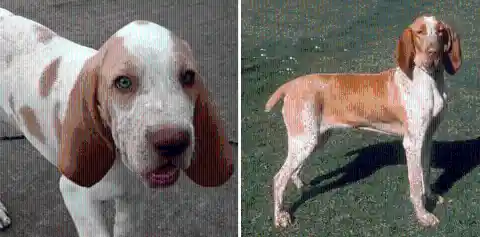
This dog was used for hunting in the marshy lowlands and was a trotting breed. These big dogs were bred both for their eye appeal and natural hunting ability. Shortly after the breed was officially unified, the working standard was written and released, and in 1949 the Societa Amatori Bracco Italiano was founded in Italy. The Bracco Italiano was brought to the United Kingdom in the late 1980s; however, the United States did not experience the Italian Pointer until approximately 1994.
#17. Turkish Pointers
The Turkish Pointer is one of the rarest breeds and originated in the south Anatolian city of Mersin in the Tarsus province, Turkey. Some researchers report that only about 200 dogs of this particular breed exist. The breed’s distinct feature is its fork-like nose, which gives the Turkish pointer its original name – Catalburun. Even though this dog hasn’t been officially acknowledged yet, it has a very memorable and well-recognizable appearance and it is treasured as a local partridge hunter.
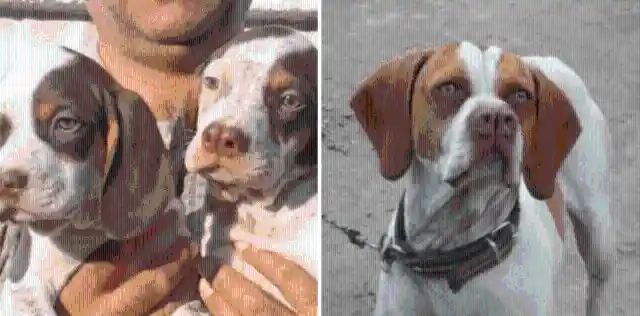
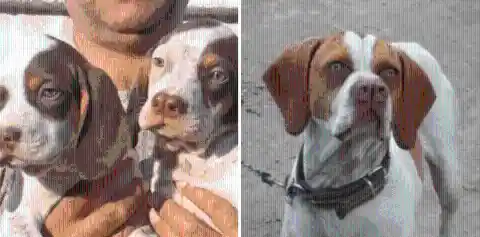
The breed is smaller and heavier than some of its more refined European counterparts but is remarkably agile and resilient. The Catalburun is prized for its stamina and intelligence, being a committed and intuitive worker. Its body is well-boned and muscular, with strong legs, a fairly wide and deep chest and an elegantly broad head with a powerful muzzle.
#16. Caucasian Ovcharka
The Ovcharka bonds strongly with its family, including children and other pets, and it takes its role as their guardian very seriously. The Ovcharka is steady, sweet, and kind with the people he knows. When it comes to strangers, he’s suspicious, and he may be aggressive towards unfamiliar dogs. Light sleepers beware: The Ovcharka has a tendency to bark at night, alerting you to possible dangers.
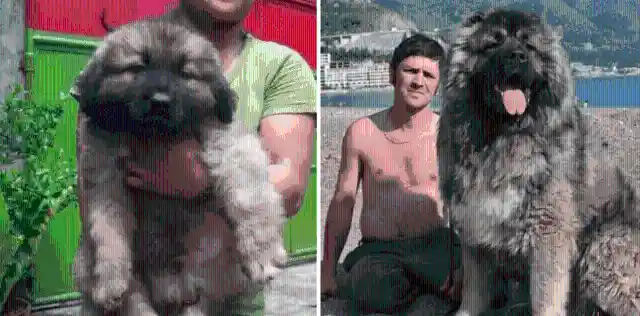
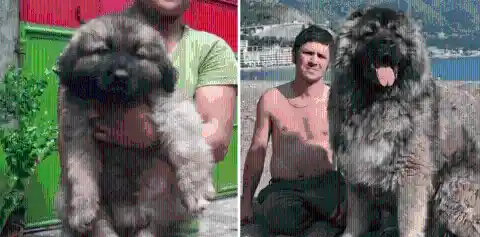
Caucasian Shepherd Dogs are massive. Males tend to be a bit larger than females and weigh from 110 to 220 pounds, while females average around 100 to 180 pounds. Their exact weight can depend on where they come from or what type they are. Mountain dogs are more muscular, while plain dogs are a bit leaner. Males are about 27 to 30 inches in height at the shoulder, while females measure between 25 and 28 inches. But to put it short, Caucasian Shepherd Dogs are quite a giant breed.
#15. Czechoslovakian Vlcak
The Czechoslovakian Vlcak or Czech Wolf Dog is a relatively new dog breed, which was first bred as a military attack dog. This breed is the result of an experiment in 1955 that involved crossing 48 working line German Shepherds with Carpathian wolves.
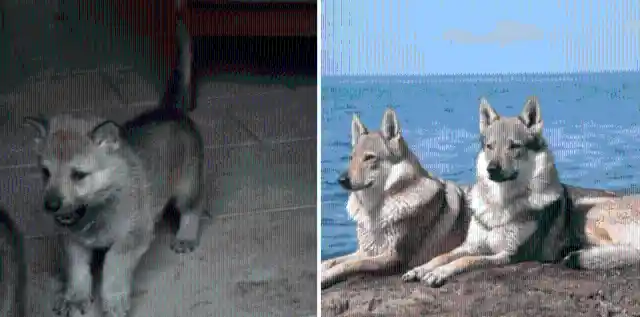
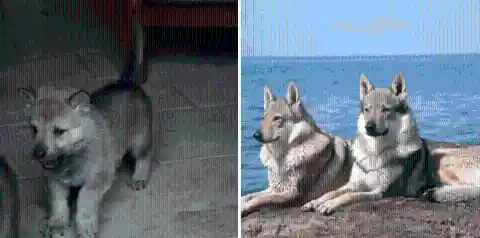
The Czech Wolf Dog, like its name indicates, looks more like a wolf than a dog. Its body is lithe and powerful with long feet and a strong back. Its head is also like that of a wolf and its powerful teeth meet in a razor-sharp bite. The dog’s chest is large and flat and its stomach is strong and drawn in. The Czech Wolf Dog’s coat is also reminiscent of that of the Carpathian Wolf and is short, thick and is yellow-grey or silvery-grey in color.
#14. Estrela Mountain Dog
The Estrela Mountain Dog, or Cão de Serra da Estrela, is an intelligent and independent dog from Portugal. Though playful and extremely loyal, it is not the ideal pet for first-time dog owners. The Estrela has a tendency to bark and protect its territory fiercely, and will only obey a strong-willed person. The Estrela Mountain Dog is calm but will not hesitate to come to the defense of those it loves, making it an exceptional guard dog.
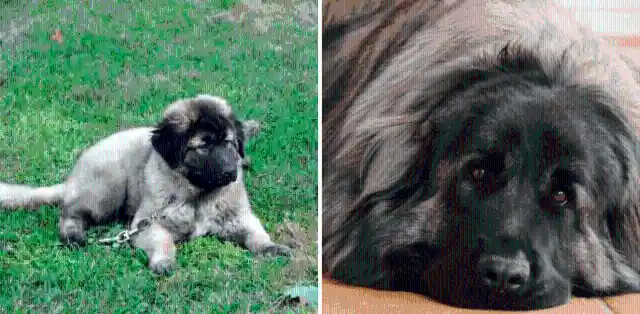
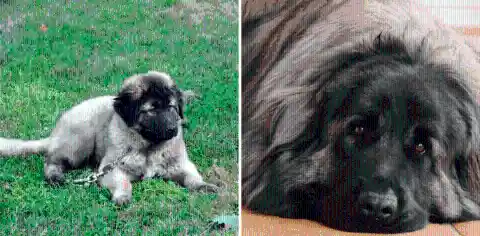
These dogs have the characteristics required to survive in a mountain environment. They are large-sized, strong, agile, deep-chested, and are able to tolerate a marginal diet. Moreover, they have a proper set of the legs, a powerful mouth, a tuft of hair around its neck, an easy, jog-like gait, a warm coat, and a watchful, mistrustful, yet loyal temperament.
#13. Grand Basset Griffon Vendéen
The Petit Basset Griffon Vendéen has a rough, scruffy outline and distinctive long eyebrows, beard, and mustache. They are generally from 13 to 15 inches tall, and their bodies are longer than they are tall. PBGVs were bred to hunt small games, such as rabbits, in rough terrain. In addition to their charmingly tousled appearance, PBGVs have a delightful personality. They are active, happy, curious, and highly intelligent.

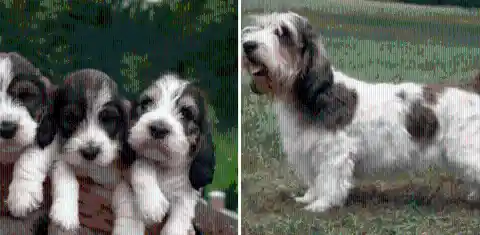
French hounds developed into the breeds they are today by forming to fit the particular needs of their environment. Their solution was to shorten the legs of the dog and, through evolution and breeding, a low-set dog was created. By the end of the 19th century, the Basset Griffon Vendéen, combining both hardiness and a shortened leg, had evolved as a part of the basset breeds of France.
#12. Hovawart
Physically, Hovawarts are large, heavy-boned dogs that have been bred to be intelligent guardians of livestock. They come in three colors: blonde, black and tan, and black. They are alert, faithful, trustworthy, extremely intelligent, fun-loving, and stubborn. Owning a Hovawart can be quite a challenge, and they require significant time and attention from their owners, which is why they are not recommended for first-time dog owners.
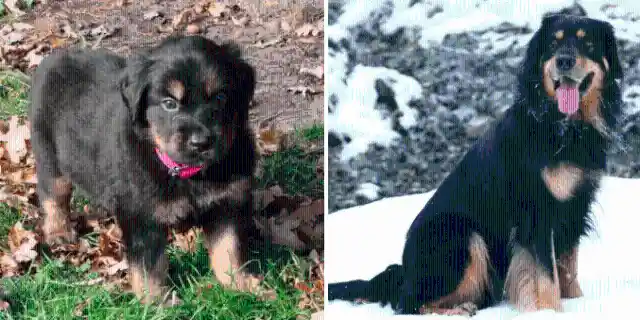
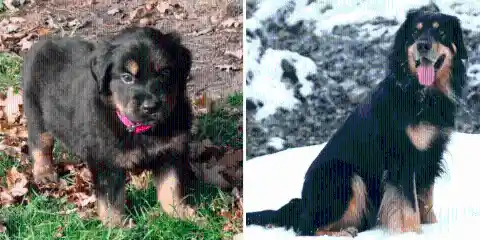
Unlike most other working breeds, Hovawarts are not as eager to please their masters and require various reward-based training methods. If positive encouragement is not used, these dogs can lose interest and become stubborn during training. It is also important that owners display a loving but firm style of leadership with these powerful dogs.
#11. Kai Ken
Kai Kens are athletic and intelligent with a strong desire to hunt. The Kai is an independent thinker and can form a strong bond with their family. They are excellent swimmers and climbers and have been known to climb trees and swim rivers in pursuit of game. They have a distinct brindle coat that comes in three colors: Black Brindle, Brindle, and Red Brindle.
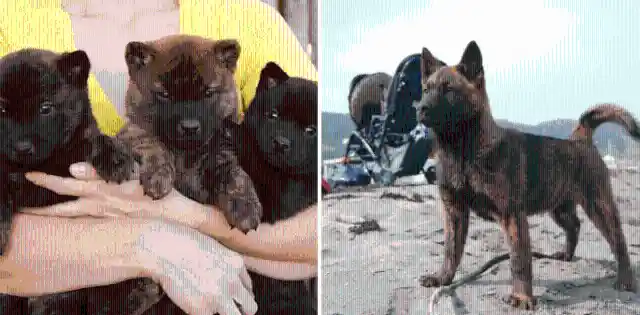

The Kai Ken was recognized by the Japanese Kennel Club in 1934 and was first brought to the United States during the 1950s by servicemen in the military. It is unknown whether any of these original dogs survived but, during the 1990s, a young male and several female puppies were brought to the States, and these dogs were the foundation stock of the modern American-bred Kai Ken.
#10. Kooikerhondje
The Kooikerhondje, that roughly translates to the “little white and orange dog with a big heart”, is a sporty, eye-catching fellow with a silky all-weather coat of white and red patches. They are instantly recognizable thanks to their large, black-tipped ears and the richly feathered tail they proudly wag. The breed has the sturdy bone structure expected of a serious hunter, but the overall picture is that of a harmoniously built dog of smooth, flowing contours and springy gait.
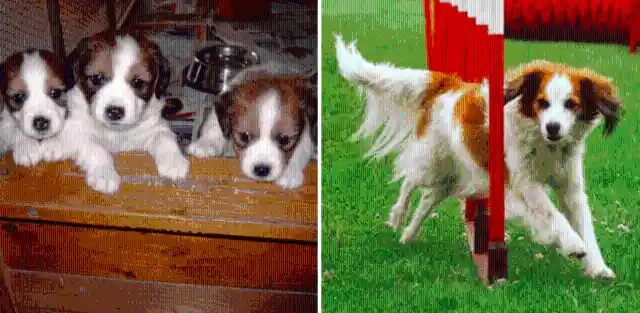
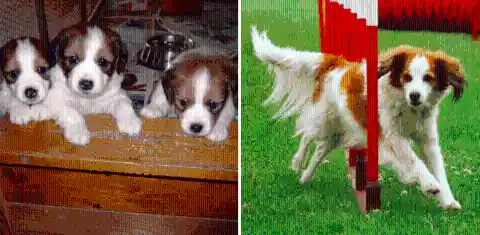
The Nederlandse Kooikerhondje is a very old breed, appearing in paintings by the Dutch masters back into the late Middle Ages. The breed was used in the “Eendenkooi”, which were manmade duck-trapping pond systems that were used prior to the invention of gunpowder. The breed was also associated with the founder of the Dutch Monarchy Prince William of Oranje, whose “Kooiker” Kuntz was credited with saving the Prince’s life when assassins sought to kill him.
#9. Lancashire Heeler
The Lancashire Heeler’s history extends back to the 17th century, but the breed’s exact origin is unknown. However, it is generally accepted that a type of Welsh Corgi was utilized to drive the stock to market in northern Wales. It is believed that this breed was originated somewhere around the Ormskirk area of West Lancashire, and its possible ancestors include the Corgi and the Manchester Terrier.
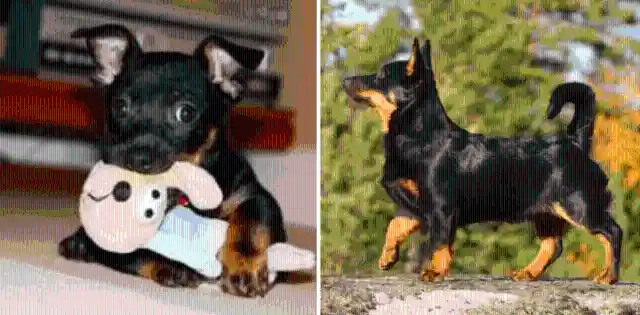
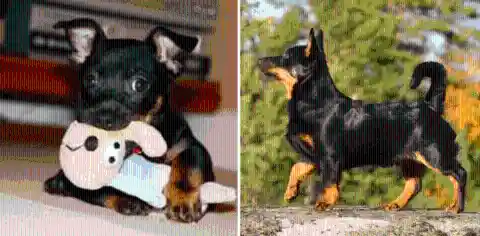
Though the Lancashire Heeler was developed to drive livestock to the market, these little dogs are fairly adaptable and they can do well as family pets. They are smart and trainable, but can develop a stubborn streak and may become destructive if it doesn’t get enough daily exercise.
#8. Mudi
The Mudi (actually pronounced “moodie”) is a medium-sized herding dog from Hungary which has been in existence since the 19th century. It is said that the Mudi evolved naturally from crosses of the Puli, Pumi and German Spitz breeds. Nowadays, the Mudi, although very rare, are seen as an active, intelligent, biddable working breed.
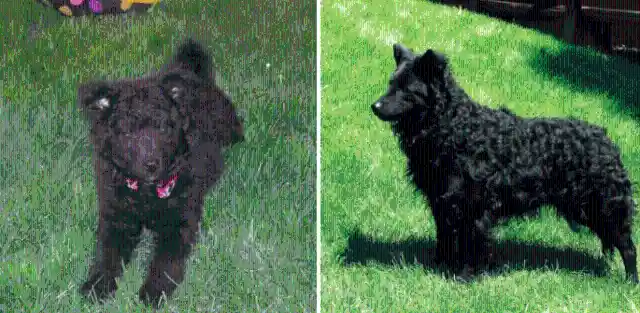
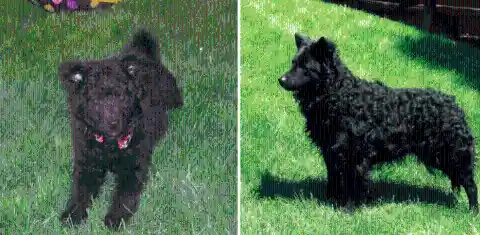
The Mudi has a coat that is easy to maintain. A weekly brushing and seasonal bath will keep the dog look fresh and clean. The coat on the dog’s head and leg fronts is short while the remainder of the coat is wavy. This breed does not shed excessively. There are quite a few acceptable coat colors within the Mudi breed, including white, yellow, brown, gray and merle. However, the Mudi most frequently seen is black.
#7. Pumi
Authorities recognize three sheepdogs indigenous to Hungary: the Mudi, Puli, and Pumi. The Puli is thought to be the oldest and has established in what is now Hungary around A.D. 800. Between 300 and 400 years ago, the Puli was interbred with Western European herding dogs and terriers to produce the Pumi. For years the Pumi was considered a regional variant of the Puli. This began to change in the early 20th century when the standardization of the two breeds began.

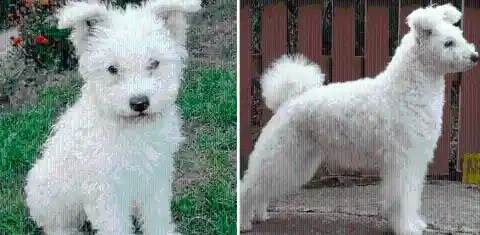
True to its working roots, the Pumi is intelligent and energetic and has an excellent work ethic. It has a virtually limitless willingness to work. The Pumi uses its intelligence to assess each new situation, including strangers, and may appear aloof while thinking through the situation. Early socialization is very important so that they get used to lots of new situations.
#6. Russian Toy
The Russian Toy is a toy breed with a lineage that dates back to the Russian aristocracy. In general, it is a good-natured imp that loves to run and play. They will dash through the house or yard chasing toys. However, many others are willing to do nothing more than lounge in your lap all day long, content in knowing that they are the prize jewel in your home.
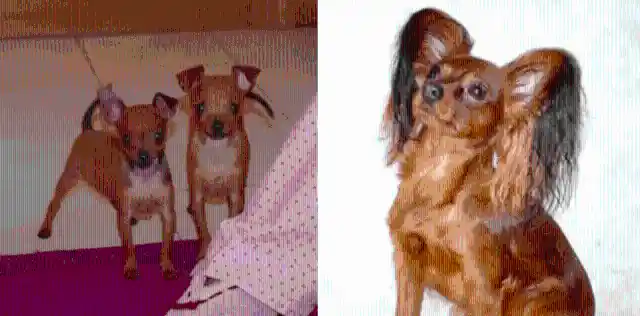
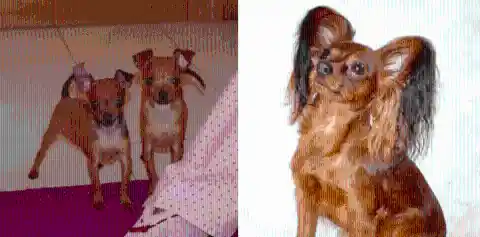
Unfortunately, the Russian Revolution of 1917 nearly exterminated the Russkiy Toy. The breeding of dogs for companionship was brought to a halt and the fate of the Russian Toy was uncertain. After the death of Stalin, a concentrated effort was made in several regions of the Soviet Union, including Moscow, Leningrad, Sverdlovsk, and Irkutsk, to restore the Russian Toy to prominence.
#5. Schapendoes
Schapendoes are a lightly-built, long-coated, medium-sized dog. Its movements are effortless and springy and its astounding ability to jump makes it excel at agility. With an attentive and courageous character, they are intelligent, watchful, lively, friendly and high-spirited. They also develop great affection and loyalty towards those people which they are familiar with.
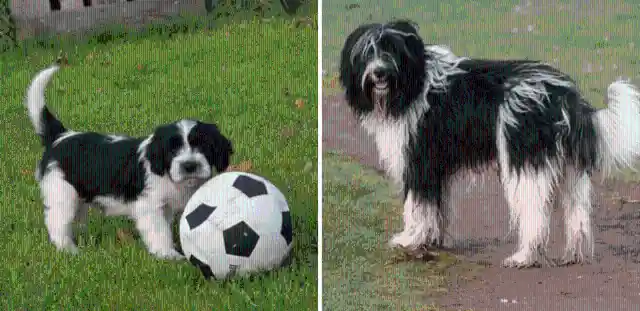
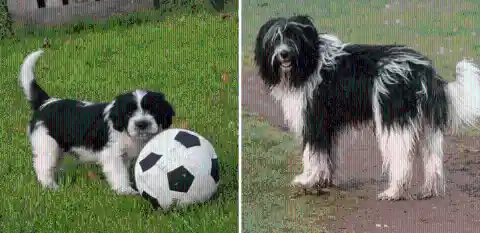
The breed was first shown under the name “Domestic Herding Dog” in the 1870s and it nearly went extinct during World War II. The modern Schapendoes breed was developed from a small number of survivors, first recognized by the Dutch national kennel club, Raad van Beheer, in 1952.
#4. Slovensky Cuvac
The Slovensky Cuvac breed derives from Arctic wolves, whose remains from the pre-ice age have been preserved in the mountainous regions of Europe. They include the northern slopes of the Caucasus, the Rhodope Mountains in the Balcans, the northern slopes of the Abruzzi and Alps, and last but not least, the Pyrenees.

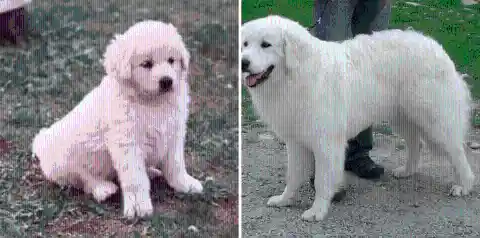
The Slovensky Cuvac is a large, furry dog whose big, round head and long muzzle ends with a prominent black nose. The breed has small, oval eyes and small pendant-shaped ears. Slovensky Cuvacs have a neck that has the same length as their head, and they have a broad chest with well-sprung ribs. Their belly is slightly sunken in. They have a long muzzle which leads to their prominent black nose. They have muscular thighs and hips, and their front legs are muscular and straight. Their long tail is held down at all times.
#3. Spanish Mastiff
The Spanish Mastiff is an enormous, well-balanced, powerful and muscular dog. It has a massive head and a body covered with a medium-length coat. Its bark is raucous, low pitched, very sonorous and audible from a considerable distance. The Spanish Mastiff comes in a range of coat colors, including black, fawn, red, gray, and yellow, and can be seen with brindle or white markings.
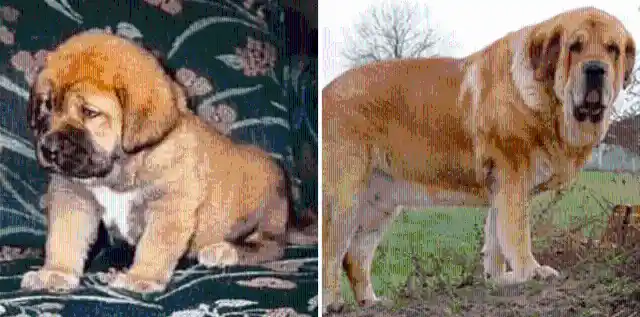

The Spanish Mastiff is recognized as an ancient breed, though its exact origins are unknown. Mentions of a Spanish Mastiff-like breed can be traced back for more than 2,000 years to the Iberian Peninsula: it is believed that breed’s ancestors were introduced in the region by the Phoenicians and Greeks prior to the Roman invasion. The Spanish Mastiff was largely used as a herding dog and a livestock guardian in Europe and there is some evidence to suggest that the breed may have also been used in some of the battles that the Spaniards had against native peoples.
#2. Swedish Lapphund
The Swedish Lapphund is the oldest of the native Swedish breeds and is believed to be one of the most ancient breeds in existence today. It was an important partner of the Sami people of Lappland, which resided in Northern Norway, Sweden, Finland, and northwest Russia). They were initially used as a hunting and guarding dog and later as a herding partner with the domestication of reindeer. One of its many characteristics is the use of its vocal talents.
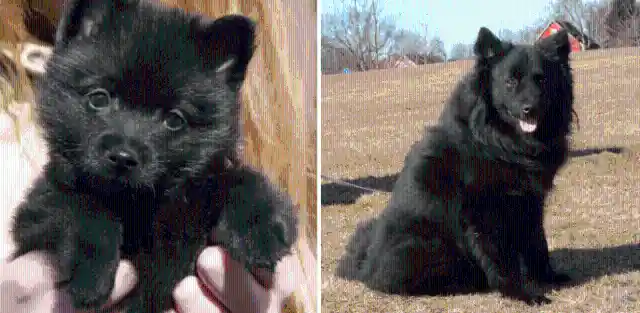
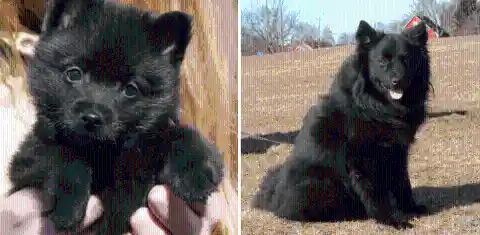
There are approximately 1,200 Swedish Lapphunds in the world, most of which live in Sweden. Others are located in Finland, Norway, England, Denmark, The Netherlands, France, Germany, Belgium, Austria, Switzerland, Slovenia, Russia, and Australia. Only a few live in the United States. Basically, you have to be extremely lucky in order to find one!
#1. Vizsla
The Vizsla is easily recognized by its sleek golden-rust coat. They can measure up to 24 inches at the shoulder and are usually used for hunting. Their long, silky ears frame a loving facial expression. As a hunter expected to work closely with humans, Vizslas form a tight bond with their owners and hate to be left alone.
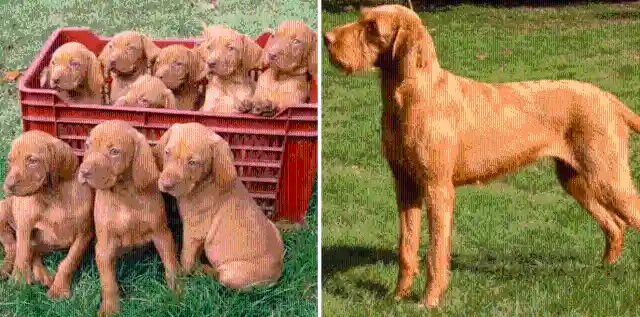
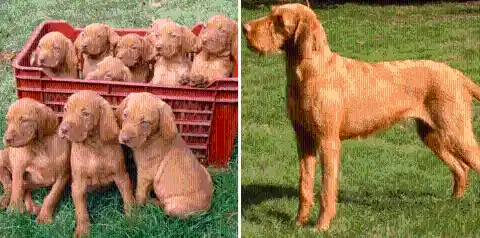
The Vizsla’s ancestors are believed to be the dogs of the Magyar tribes who settled in present-day Hungary thousands of years ago. Archeologists have found stone etchings that depict the Magyar hunter with his falcon and his dog, the canine that would become the Vizsla.